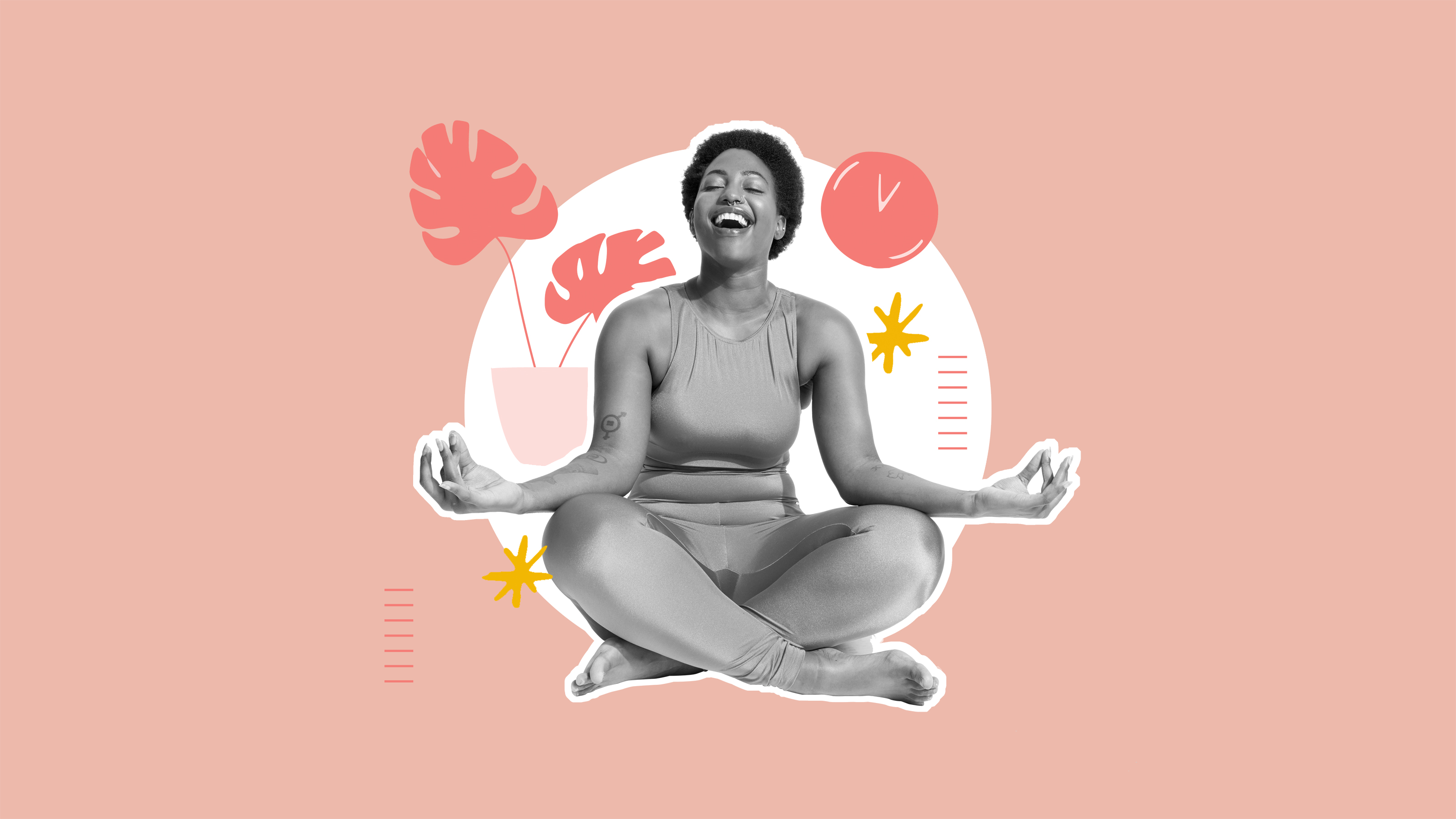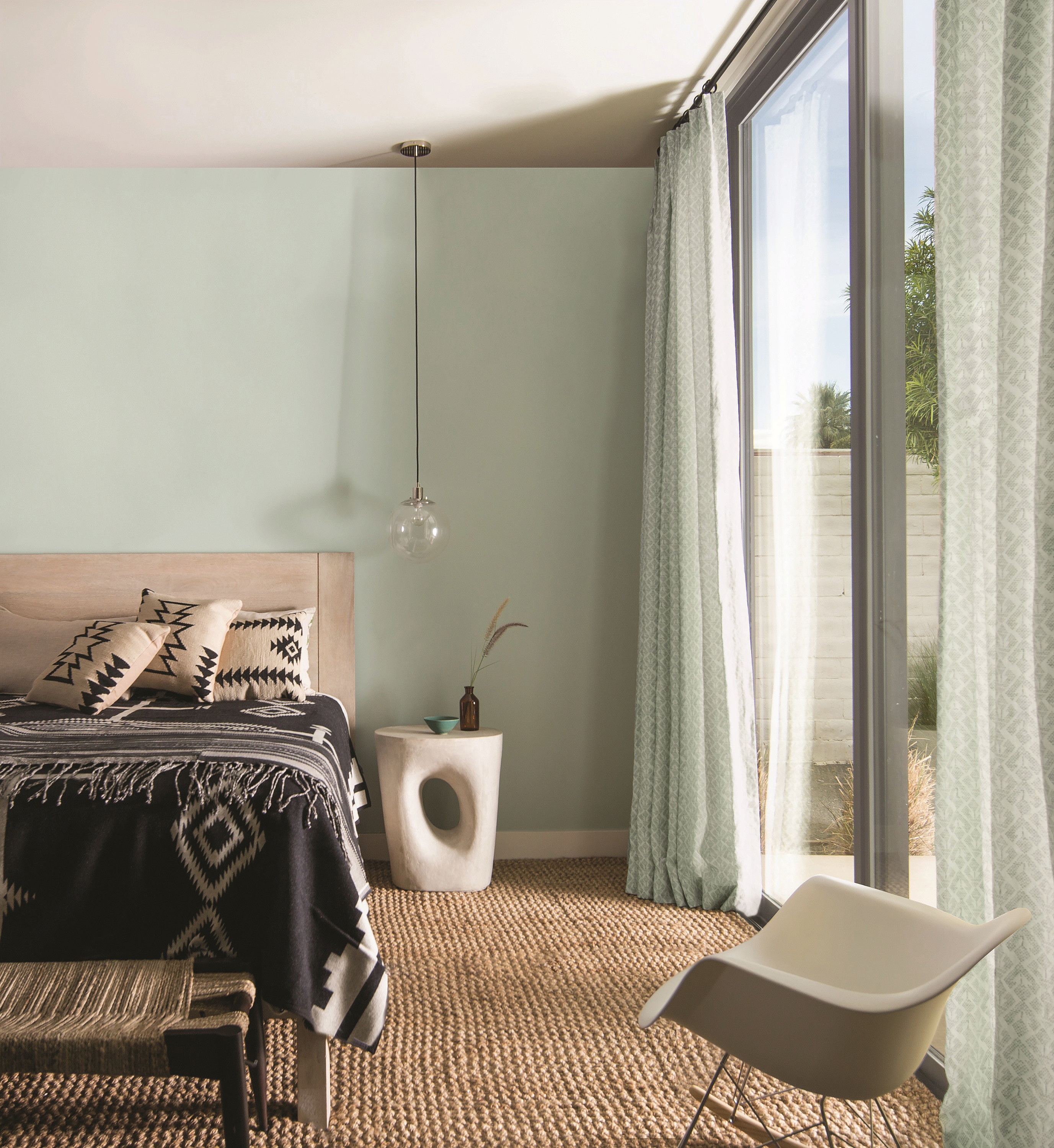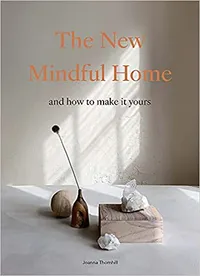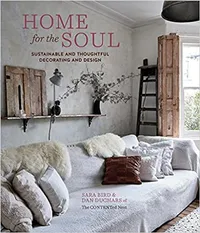Turns out, a mindful home isn't just about zen looks after all
Creating a mindful space is not about what it looks like, but how it makes you feel – and there are simple steps you can take to improve your home’s wellbeing, says Jennifer Morgan in conversation.

Mindful, mindfulness, living more mindfully… all words and phrases that have secured a firm footing in our vocabulary during the turmoil and chaos of the past 18 months and beyond. Now more than two years on from the pandemic, the world is still far from rested.
While we have an idea of what mindfulness means – the act of being present in our lives and our actions, not overwhelmed by what’s going on around us – it can often seem unattainable and our homes, a far cry from the zen-scapes you'll endlessly scroll on Pinterest.
It's all too easy to see an image of something that looks beyond peaceful and to react in a bid to recreate that perfect picture of zen. When actually, taking a breather and stepping back to take a more considered approach to decorating can be much more rewarding.
Tapping into your personality traits, going with your gut and working alongside your subconscious can help you add colour and incorporate considered purchases into your surroundings, the right way.
I caught up with three inspiring women – mindful living authors and a creative business coach – to see what mindfulness means to them, how they curate more conscious home living environments and how we can follow in their footsteps. Here we are in conversation:
What is a mindful home?
Joanna Thornhill, stylist and author of The New Mindful Home and How to Make it Yours says 'A mindful home is a space that’s designed to support our own wellbeing and helps make it easy to practice self-care (in whatever form that may take), or indulge in creative hobbies – but one that’s equally aware of the impact that decorating mindfully entails to the environment.’ Who wouldn’t want this kind of home?
‘The experience of the pandemic and losing so much access to the outside world has, unsurprisingly, made us focus a lot more on our homes,’ says Thornhill. ‘They became the centre of our world. Add to this the way that mental health and environmental concerns relating to our throwaway culture have become more mainstream and you can see why we’re looking at how we design our homes mindfully – it’s a natural progression.’
Get small space home decor ideas, celeb inspiration, DIY tips and more, straight to your inbox!

Creative business coach and stylish Nicola Wilkes believes a mindful home reflects us and not our neighbours, friends, or followers. ‘A mindful home is authentic,’ she says. ‘You don’t have to prove yourself or your style/likes/dislikes to anyone: it’s about you and your happiness, and essentially who you are at the end of the day. It’s about a space you create purposefully to make life better.’
What actions can we take to create a mindful space?
Author of Home for the Soul, Sara Bird says to start by thinking: ‘Really think about how you use a space and how areas and rooms make you feel when you’re in them.’ Begin with a home audit of sorts: if your hallway is a place of chaos, then what can you do to calm it down? If your bathroom isn’t the sanctuary you dream of, then perhaps it needs a makeover? Does your bedroom aid that golden eight hours of sleep each night?
With a more concrete idea of your set intentions for each space, you can start to edit and fine-tune your surroundings to create a mindful environment that works for you and solves any bug bears.
- Feng Shui bedroom tips everyone should know about.
Free up space to think more clearly
‘I don’t think many people realise how much we’re influenced by the way we display, store and keep things in our homes,’ says Wilkes. ‘It can make the difference between holding onto lots of mental clutter versus feeling free to think clearly, take action and move forward in our lives. When my home is messy, cluttered or needs decorating, it creates endless distractions for me. I like everything to have its place and for it to feel streamlined – this makes those mundane tasks, such as homework, washing, ironing, and tidying kids’ rooms, so much easier.’
So, on your mindful home journey, find time for a good declutter – though don’t go overboard, as Bird cautions. ‘While clutter can make us feel stressed, objects and finds do lend personality to a room and fill a home with memories,’ she says. ‘The secret is to regularly monitor what you do have and then organise what remains into zones and areas, using boxes, baskets, cupboards and shelving, for an orderly way of having things in your home.’
‘We need to tune into our gut – or that intuitive voice – to get clear on what will truly enhance our happiness at home,’ says Thornhill. ‘Does that look like improving storage (or decluttering), so it’s not always a battle to put the coats or kids’ toys away? Or is it ensuring you’ve carved out a corner of calm where you can escape the stresses of everyday life? Really focus on the elements that are causing you stress and how you can rectify this.’
Decorate to nourish the soul and social connections
What if it’s the décor that’s causing you angst? ‘Decorating mindfully encompasses a number of different elements,’ Thornhill adds, ‘but it comes back to how you want to feel in your home. If you want to encourage sociability among your family or household in communal areas, consider relaxed seating layouts and bold, vibrant colours and patterns to help support this. For a spa-like bathroom, opt for a limited palette of earthy, natural tones and bring in soft texture.’
Don’t underestimate the importance of natural light in a mindful home. ‘It connects us to nature and brings health-enhancing benefits,’ says Bird. ‘It is a balance, though, so where we open up areas to daylight to set a positive mood in a scheme, we need to balance with shade and privacy. Make sure you include lots of tactile surfaces – think of furnishings to sink into, brush against or to help dampen noise.’
- Find more creative ways to let nature into your home.
Be considerate in your purchases
Thornhill, Bird and Wilkes all champion considered purchases. ‘Can a piece of furniture be repurposed elsewhere around the home or upcycled?’ asks Bird. ‘If you’re buying new, try to choose something for longevity.’ Being eco-aware belongs very much in the mindful home – it’s that sense of being mindful about our planet, too. ‘Make it a project to explore the many eco options for decorating and research the benefits of health-enhancing materials,’ Bird adds.
‘Items bought for the sake of it because they’re a fashion fad, in a high street home store or were reduced is not my style,’ says Wilkes. ‘I’m far more likely to save up for a design classic I’ll have for the rest of my life, such as my dining table, which is the Saturn by Swedish brand Lammhults, or my dining chairs by Kartell, which I saved up for and bought one at a time 20 years ago as a single mother. I still have both.’
‘To be truly mindful, it’s important to consider the sustainability credentials of the pieces we bring into our home, and who made them, just as much as their aesthetic appeal,’ says Thornhill. ‘It acknowledges the psychological triggers and associations we subconsciously make all the time in relation to what we surround ourselves with and brings this into our forethoughts as a key consideration within the design process.’
- These are some of our favourite sustainable furniture brands.
Allow your personality features to define your space
Thornhill also looks at personality types in her book and how we can use this to inform our decorative decisions. ‘If you understand how your intro/extroversion can dictate the sort of spaces that resonate with you most, then you’ll get a much better idea of what works for you personally,’ she says. ‘Although I’m very organised and find clutter stressful, conversely, I like to surround myself with ornaments, books, art and design pieces in quite a maximalist way as visual stimulation is very comforting to me: I have a busy mind, so without anything to look at, my thoughts can race. Other people might find this overwhelming.’
Colour – and your colour personality, as identified by Angela Wright – also has mindful implications: ‘This goes far deeper than aesthetics and relates to the tonal palettes, which naturally support us best. Since discovering my own colour personality, I’ve been making tweaks around my home and repainted rooms to create a space that speaks to my subconscious and just “feels” right.’
‘During the second lockdown, I repainted my living room from dark grey to a rich, verdant green,’ says Thornhill. ‘I’d always loved the “blank canvas” the grey walls gave, almost like a palette cleanser to escape from my busy life to. But with extended lockdowns, I began to crave something more stimulating that would enhance my feelings of connecting to nature. As well as the green refresh, I switched out a few pieces to more natural elements, increasing my biophilic connection to nature. The space now feels much more cocooning and welcoming, even though the change hasn’t been that dramatic.’ Bird agrees, and her final words sum it up to perfection: ‘It’s the small things that matter in a mindful home.’
The New Mindful Home and How to Make it Yours, Joanna Thornhill, is available on Amazon. It's such a fresh and inspiring read, we'd totally recommend it.
Home for the Soul: Sustainable and thoughtful decorating and design by Sarah Bird. For top tips on decorating sustainably with no negative impact on beautiful design.
Jennifer Morgan is an editor, content creator and stylist with over 20 years' experience in interiors and craft, working on titles including Ideal Home and Style At Home. She's written dozens of long-read features for Real Homes, spanning topics from mindfulness in the home to achieving renovation success.

